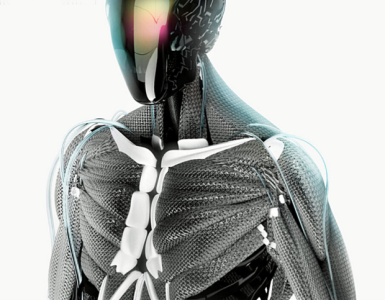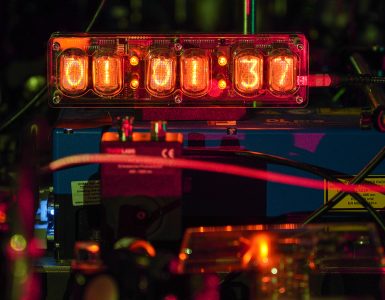When the ancient Incas wanted to archive tax and census records, they used a device made up of a number of strings called a quipu, which encoded the data in knots. Fast-forward several hundred years, and physicists are on their way to developing a far more sophisticated modern equivalent. Their “quipu” is a new phase of matter created within a quantum computer, their strings are atoms, and the knots are generated by patterns of laser pulses that effectively open up a second dimension of time.
This isn’t quite as incomprehensible as it first appears. The new phase is one of many within a family of so-called topological phases, which were first identified in the 1980s. These materials display order not on the basis of how their constituents are arranged—like the regular spacing of atoms in a crystal—but on their dynamic motions and interactions. Creating a new topological phase—that is, a new “phase of matter”—is as simple as applying novel combinations of electromagnetic fields and laser pulses to bring order or “symmetry” to the motions and states of a substance’s atoms. Such symmetries can exist in time rather than space, for example in induced repetitive motions. Time symmetries can be difficult to see directly but can be revealed mathematically by imagining the real-world material as a lower-dimensional projection from a hypothetical higher-dimensional space, similar to how a two-dimensional hologram is a lower-dimensional projection of a three-dimensional object. In the case of this newly created phase, which manifests in a strand of ions (electrically charged atoms), its symmetries can be discerned by considering it as a material that exists in higher-dimensional reality with two time dimensions.
“It is very exciting to see this unusual phase of matter realized in an actual experiment, especially because the mathematical description is based on a theoretical ‘extra’ time dimension,” says team member Philipp Dumitrescu, who was at the Flatiron Institute in New York City when the experiments were carried out. A paper describing the work was published in Nature on July 20.
Opening a portal to an extra time dimension—even just a theoretical one—sounds thrilling, but it was not the physicists’ original plan. “We were very much motivated to see what new types of phases could be created,” says study co-author Andrew Potter, a quantum physicist at the University of British Columbia. Only after envisioning their proposed new phase did the team members realize it could help protect data being processed in quantum computers from errors.
Standard classical computers encode information as strings of bits—0’s or 1’s—while the predicted power of quantum computers derives from the ability of quantum bits, or qubits, to store values of either 0 or 1, or both simultaneously (think Schrödinger’s cat, which can be both dead and alive). Most quantum computers encode information in the state of each qubit, for instance in an internal quantum property of a particle called spin, which can point up or down, corresponding to a 0 or 1, or both at the same time. But any noise—a stray magnetic field, say—could wreak havoc on a carefully prepared system by flipping spins willy-nilly and even destroying quantum effects entirely, thereby halting calculations.
Potter likens this vulnerability to conveying a message using pieces of string, with each string arranged in the shape of an individual letter and laid out on the floor. “You could read it fine until a small breeze comes along and blows a letter away,” he says. To create the more error-proof quantum material, Potter’s team looked to topological phases. In a quantum computer that exploits topology, information is not encoded locally in the state of each qubit but is woven across the material globally. “It’s like a knot that’s hard to undo—like quipu,” the Incas’ mechanism for storing census and other data, Potter says.
“Topological phases are intriguing because they offer a way to protect against errors that’s built into the material,” adds study co-author Justin Bohnet, a quantum physicist at the company Quantinuum in Broomfield, Colo., where the experiments were carried out. “This is different to traditional error-correcting protocols, where you are constantly doing measurements on a small piece of the system to check if errors are there and then going in and correcting them.”
Quantinuum’s H1 quantum processor is made up of a strand of 10 qubits—10 ytterbium ions—in a vacuum chamber, with lasers tightly controlling their positions and states. Such an “ion trap” is a standard technique used by physicists to manipulate ions. In their first attempt to create a topological phase that would be stable against errors, Potter, Dumitrescu and their colleagues sought to imbue the processor with a simple time symmetry by imparting periodic kicks to the ions—all lined up in one dimension—with regularly repeating laser pulses. “Our back-of-the-envelope calculations suggested this would protect [the quantum processor] from errors,” Potter says. This is similar to how a steady drumbeat can keep multiple dancers in rhythm.
Read more at Scientificamerican.com





